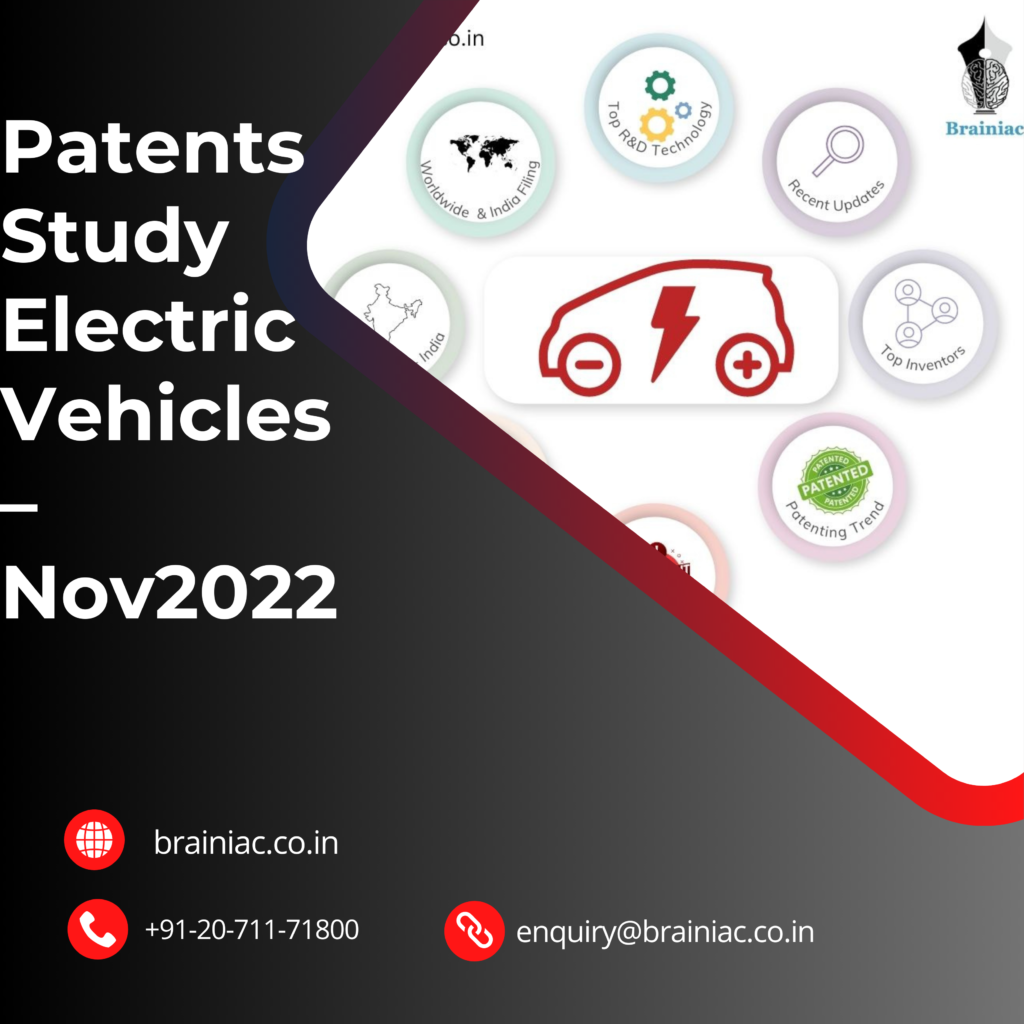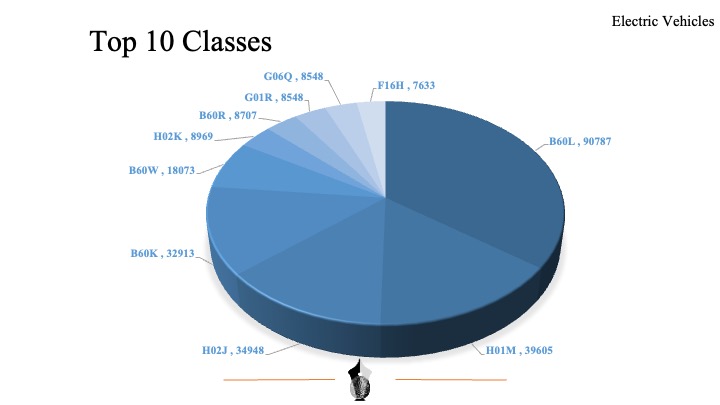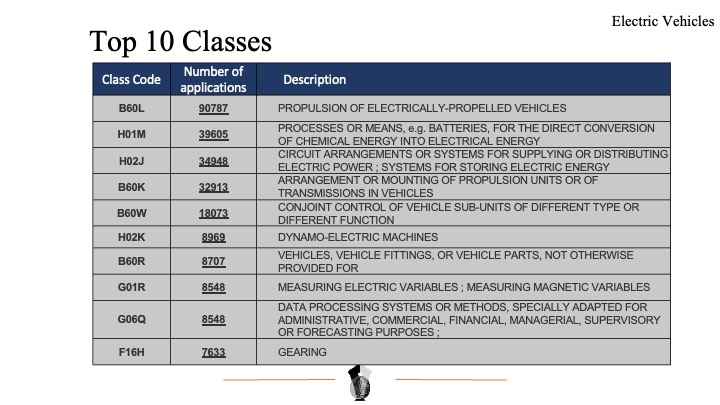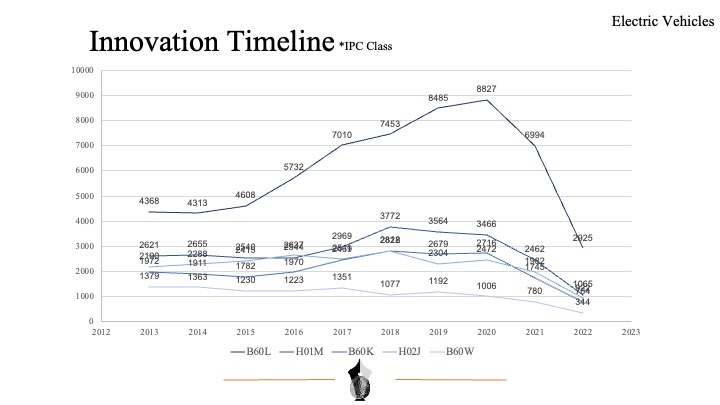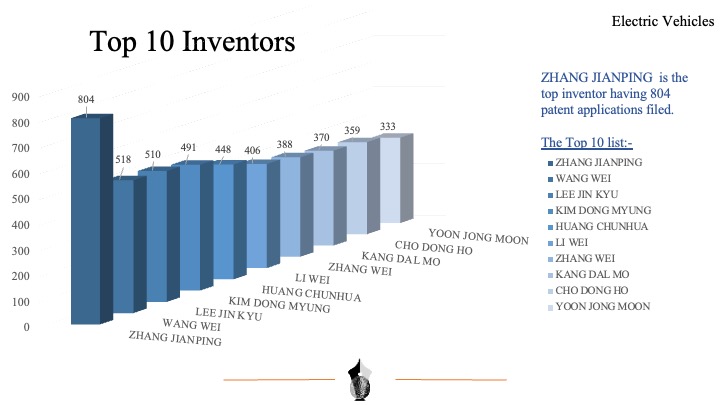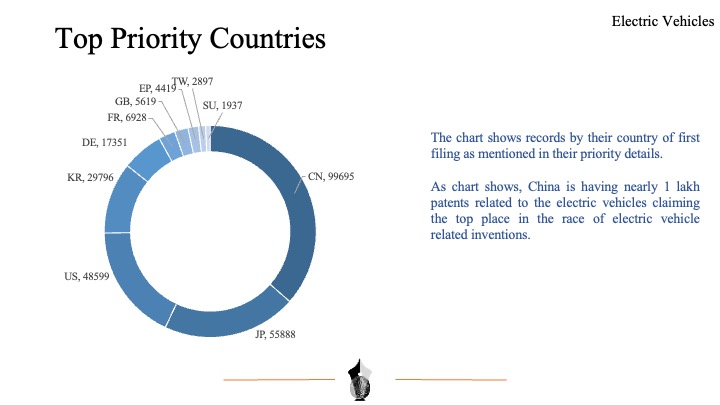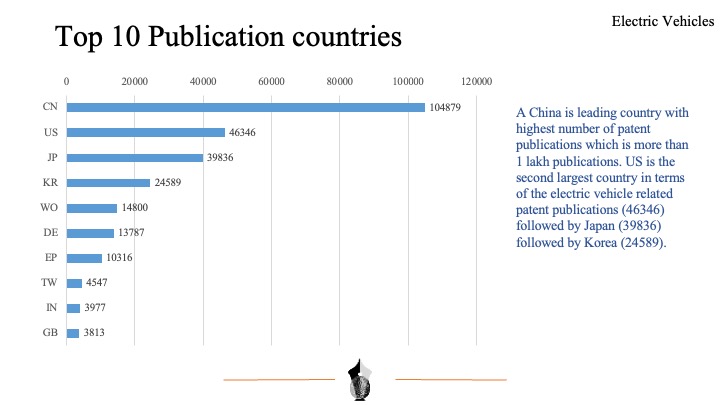Introduction
- The patent portfolio analysis is carried out for analyzing patents for the Electric Vehicle related patents.
- The patent portfolio analysis is carried out for analyzing the patents trends in Electric Vehicles.
- The patent portfolio analysis is carried out for analyzing the top market for Electric Vehicles.
- The patent portfolio analysis is carried out for analyzing the top technology for electric vehicles in which the patents are filed.
- The patent portfolio analysis is carried out for analyzing the top inventors.
- The patent portfolio analysis is carried out with respect to all geographical jurisdictions.
- No restriction regarding particular technical constrains are given.
Patent portfolio analysis – a brief history of electric vehicles
Planning to file a patent in the field of electric vehicles? Looking for invaluable information on the latest trends in electric vehicles? Which countries are ahead? Which motor companies are filing the most patents? Who are the top inventors in the field of electric vehicles in terms of filing patents? Which particular technologies in electric vehicles, such as propulsion, batteries, circuit arrangements, and others, attract the most patent applications? These, and many more insights are available in this report.
The highlights of our electric vehicles patent portfolio analysis:
- Analyzing patents for the electric vehicle-related patents.
- General patent trends in electric vehicles.
- Which are the top markets for electric vehicles.
- Top electric vehicles-related technologies in which the maximum patents are being filed.
- Who are the top inventors in the field of electric vehicles.
- Patent filings in electric vehicles in all geographical restrictions.
- Unrestricted information without any technical constraints.
Tesla electric vehicles are a rage these days. The smallest Tesla battery capacity that comes with Model 3 can last up to 262 miles. The highest range a Tesla car offers is 405 miles on a single charge, as of now, in 2023. There was a time when Tesla cars were a status symbol, but an increasing number of people are opting for electric vehicles due to their concerns for the environment.
Presented below is a brief outline of the historical evolution of electric vehicles and electric motors.
History of Electric Vehicles
- Anyos Jedlik built the first crude but viable electric motor, which used a stator, rotor, and commutator in 1827; and the next year he used it to power a small car.
- The first known electric locomotive was built in 1837, in Scotland by chemist Robert Davidson of Aberdeen. It was powered by galvanic cells (batteries).
- A patent for the use of rails as conductors of electric current was granted in England in 1840, and similar patents were issued to Lilley and Colten in the United States in 1847.
- The first battery rail car was used in 1887 on the Royal Bavarian State Railways.
- In 1959, American Motors Corporation (AMC) and Sonotone Corporation announced a joint research effort to consider producing an electric car powered by a “self-charging” battery.
- At the 1990 Los Angeles Auto Show, General Motors President Roger Smith unveiled the GM Impact electric concept car, along with the announcement that GM would build electric cars for sale to the public.
- The passage of the Electric and Hybrid Vehicle Research, Development and Demonstration Act of 1976 in the US provided government incentives for development of electric vehicles in the US.
- California electric car maker Tesla Motors began development in 2004 on the Tesla Roadster, which was first delivered to customers in 2008.
- The Roadster was the first highway legal serial production all-electric car to use lithium-ion battery cells, and the first production all-electric car to travel more than 320 km (200 miles) per charge.
- The Nissan Leaf, introduced in Japan and the United States in December 2010, became the first modern all-electric, zero tailpipe emission five door family h
- In March 2020 the Tesla Model 3 passed the Nissan Leaf to become the world’s all-time best-selling electric car, with more than 500,000 units delivered.
Important Patents
| Publication number | Title |
| US2008241667A1 | Tunable frangible battery pack system |
| US9026347B2 | Smart electric vehicle (EV) charging and grid integration apparatus and methods |
| US8076801B2 | Wireless energy transfer, including interference enhancement |
| US2011254503A1 | Wireless power antenna alignment adjustment system for vehicles |
| US5343970A | Hybrid electric vehicle |
Latest News
- Tesla Patents Dual Axis Rotation For Center Screen. Read More
- Road Bumps Could Power Electric Vehicles Of The Future, BMW’s Patent Shows. Read more
- Lexus Is Developing a Manual Transmission for Evs. Read More
- Are open-source patent portfolios the key to the EV revolution? Read More
- Apple has Won a Patent for a Future Automated Electric Vehicle Charging Station. Read More
Summary
- Electric-powered vehicles have been around in one form or another since the 1800s.
- As per known records, in England, a patent was granted in 1840 for the use of rails as conductors of electric current to drive electric locomotives. Similar a patent was granted in America to Lilley and Colten in 1847
- Highest number of patents are published in China with more than 1 lakh patents, followed by USA (46346)
- China is the major research center with highest number of priority applications.
- Toyota group is having the highest number of patent application (9238) related to the electric vehicle.
- ZHANG JIANPING is the top inventor having 804 patents filed by his name as an inventor.
- Total global EV sales in 2030 were predicted to reach 31.1 million by Deloitte.
- There is a tremendous growth in the Electric Vehicles market, but it is only limited to a part of the world. As the race to full electrification continues in China , Europe, and the U.S. which accounts for about 95% of the global electric vehicle sales.
Contact us to get more customized report.
contact@brainiac.co.in
Get in touch with the Brainiac Team


